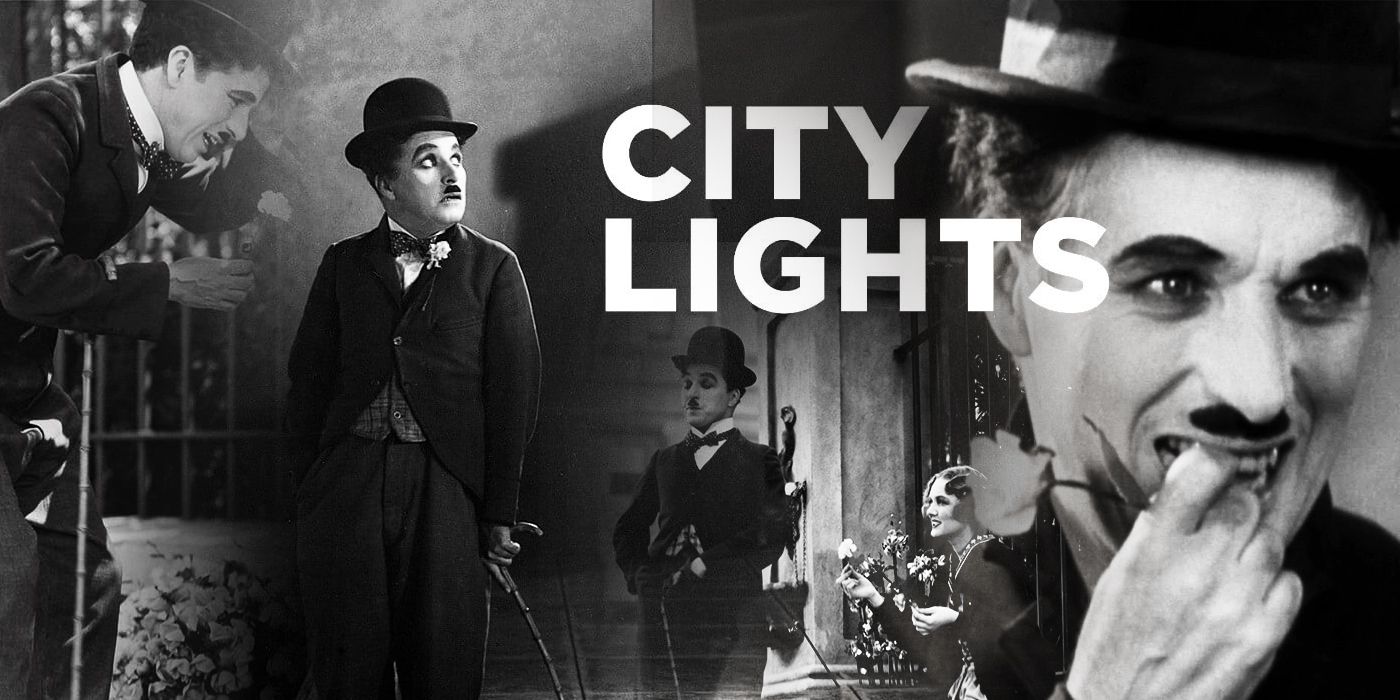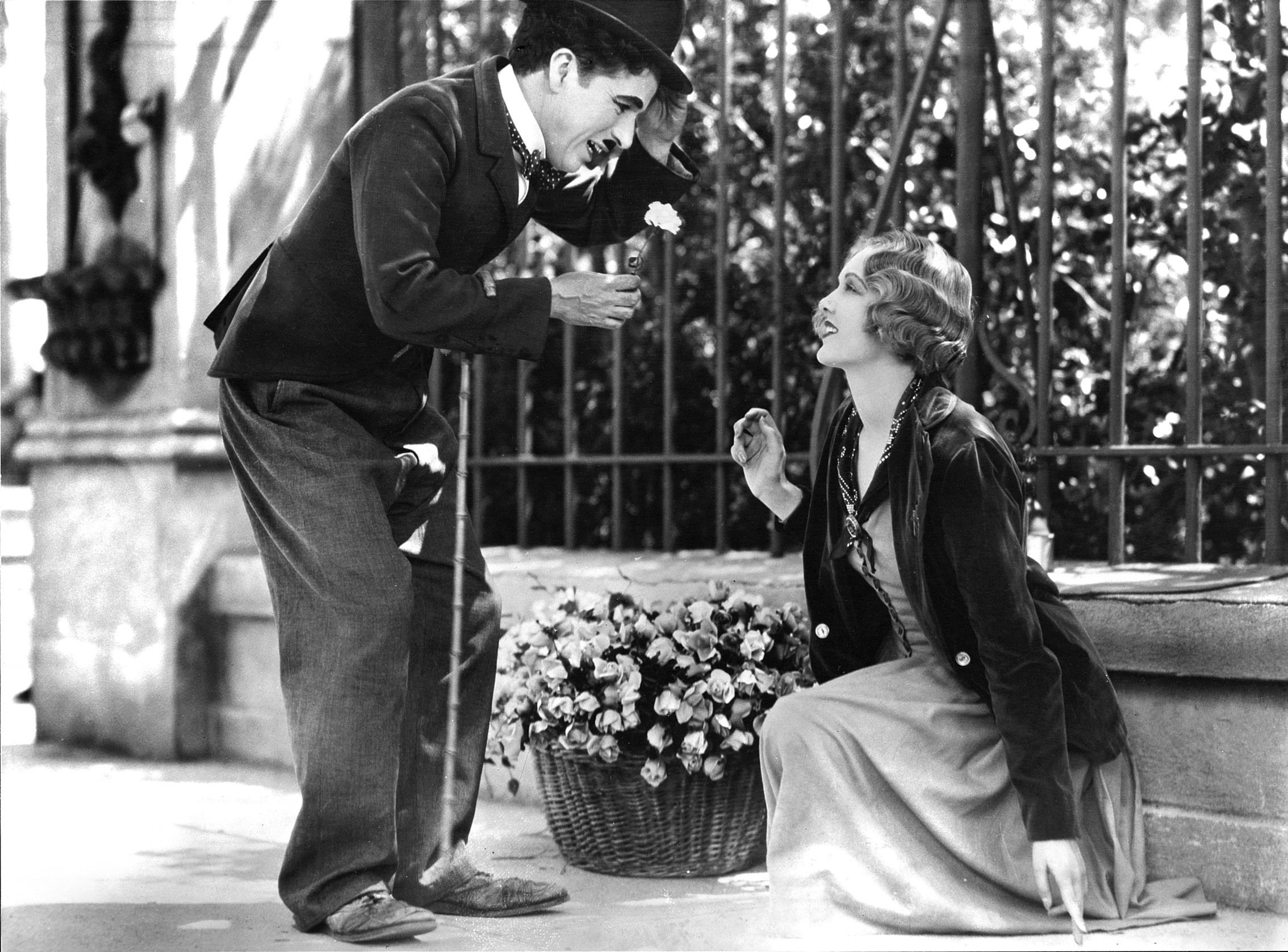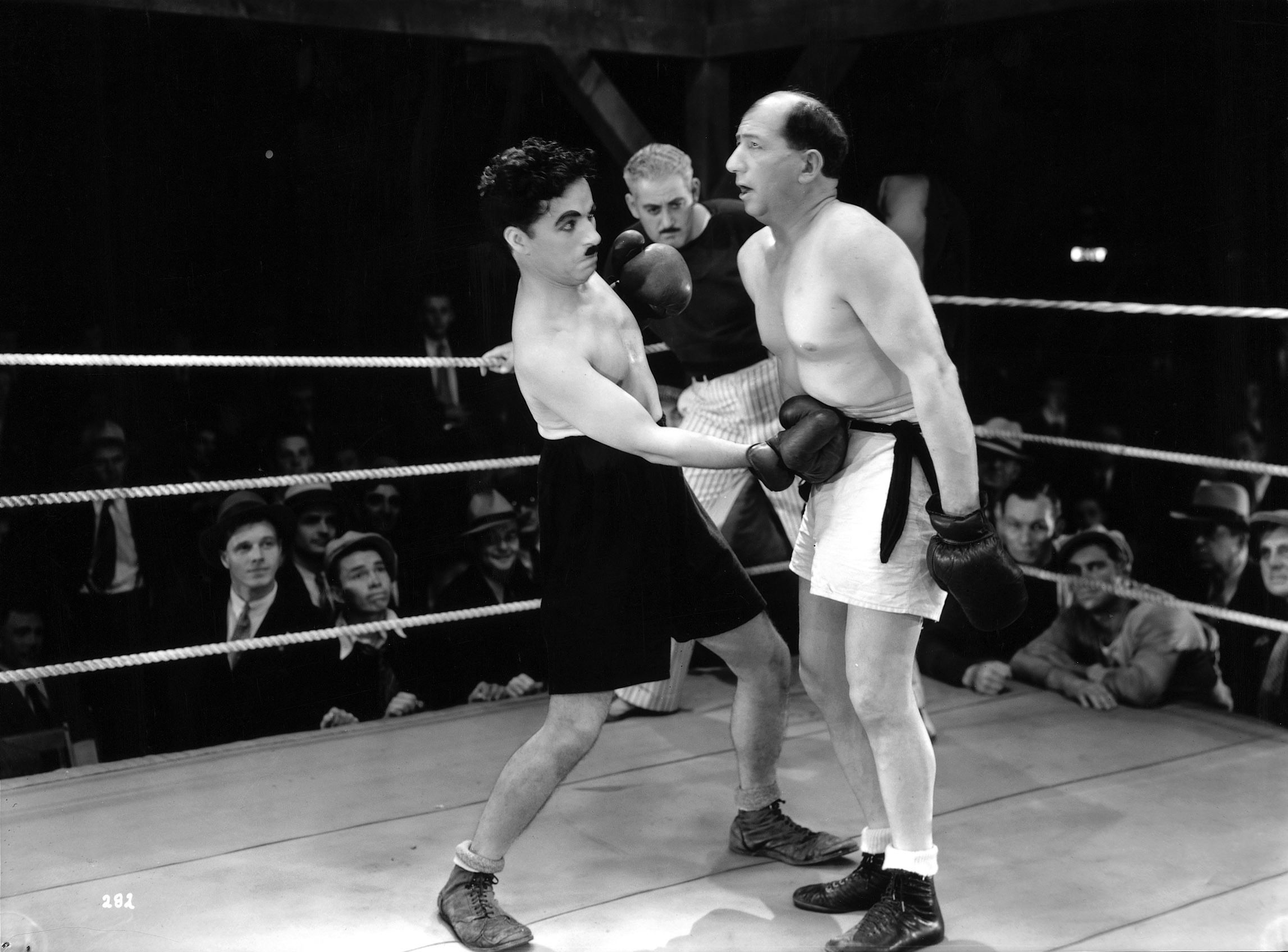It’s quite possible that cinema has never again reached the heights of emotion that Charlie Chaplin attains in the final moments of City Lights. There’s a reason this film is still remembered as one of the medium’s truly great works, touted as an all time favorite by master filmmakers as disparate as Orson Welles, Andrei Tarkovsky, Federico Fellini, and Stanley Kubrick. There’s a profound simplicity, a balanced perfection achieved in the film that exceeds even Chaplin’s other great works (of which there’s a laundry list, from The Kid to The Gold Rush). Laughs and love affairs have been leading attractions at the movies from the very beginning, and these two sensibilities have rarely been blended together with as much elegance and power as they are here. Chaplin brought a new level of seriousness and artistry to his approach in City Lights and, in doing so, perfected the romantic comedy.
For a better understanding of why City Lights is such an extraordinary success, it’s valuable to be aware of the circumstances under which it was created. The year was 1931, and talking pictures had been around just long enough to effectively kill the silent era. Chaplin himself had no interest in switching over to sound filmmaking. He considered himself a “pantomimist” whose artistry had nothing to do with the spoken word. It was due to his international status, with many classics already under his belt, that he had the freedom to disregard mainstream tastes and simply go on making his trademark silent films. City Lights became the first of these sound-era silents, in which the constraints of the silent era were adhered to not as a mere sign of the times but as a conscious artistic decision. In this manner, the film is an act of defiance against the way cinema was headed at the time while also being an immeasurable step forward for Chaplin as a personal auteur filmmaker.
Romantic elements had played an integral role in Chaplin’s filmography prior, but usually only to help incite gags, and rarely with anything resembling dramatic weight. Often, as in The Immigrant or The Rink, a love interest would simply give Chaplin’s Little Tramp a goal—to “get the girl”—provoking any number of wacky blunders and humiliations. City Lights makes the girl far more than a goal, creating an unforgettably sympathetic character who helps to provide the film’s heart and soul. That girl is a blind, desperately impoverished flower peddler, in a deeply affecting performance by Virginia Cherrill. The Tramp starts a relationship with her under the false impression that he’s rich, and much of the film’s humor springs from the situations he gets himself into to help support her financially.
The film’s humor is Chaplin at his sharpest, but it's the way comedic episodes are weaved into the central drama that really sets the film apart. The Tramp’s boxing match is well remembered as one of the great comic set pieces in Chaplin’s filmography. But it comes after an utterly tragic scene, in which the blind girl receives an eviction notice: if she can’t pay the month’s rent by the next morning, she’ll be thrown out. Unable to read the note herself, she only realizes something is wrong when she feels her grandmother’s face, and finds that it’s soaked with tears. When the Tramp is being pounded in the boxing ring, the viewer doesn’t forget that this is why he needs the prize money so badly. A merely funny scene is transformed into an empathy-building one. It’s this sense of dramatic empathy for the characters that helps the viewer to really care about the romantic relationship, so that it’s not simply a setup for gags.
If the central drama is driven by financial concerns, it suggests a layer of comedy that goes beyond slapstick. The film is Chaplin’s first major social satire, a style of humor he would be drawn deeper into with the subsequent films Modern Times and The Great Dictator. A large portion of the film places the Tramp with an eccentric millionaire (Harry Myers). The man drunkenly considers the Tramp to be a friend, but doesn’t even recognize him while sober. In contrast to the Tramp’s boundless lust for life, the millionaire is so often drunk because he is completely miserable. Many of the film’s darker gags come from the Tramp’s efforts to thwart the numerous suicide attempts of the millionaire. In juxtaposing these characters, Chaplin deflates the myth that money equals happiness. For a film first released during the Great Depression, this was certainly a worthwhile statement. In the same vein, when the blind girl comes to inevitably realize the truth about the Tramp’s own lowly social standing, she doesn’t appear to care whatsoever. This enriches the romance, and reveals love as something that transcends finances.
Despite being stylized as a silent film, City Lights does in fact utilize sound in minute and clever ways. The most readily noticeable instance is the film’s soundtrack. In the silent era, music was usually performed live by an accompanist during film screenings. The score for City Lights, on the other hand, was recorded during production, and synchronized to the visuals. Certain gags rely entirely on sound. As the Tramp slurps up a spaghetti noodle, the image is aided by the comedic noise of a slide whistle. Similarly enhancing the romantic material, the film contains an early example of the leitmotif. That is to say, a single piece of music associated with a particular character. A very syrupy, emotional string piece nearly always accompanies the blind girl, helping to garner audience sympathy for her. This is also the piece that helps to heighten the film’s ending.
Which brings us back to that legendary ending. While providing laughs, the gags have built sufficient empathy for the characters, who have been given just enough dramatic weight in the more serious and romantic sequences to allow for a deep emotional release. It’s a testament to Chaplin’s skill as a filmmaker, and he and Cherrill’s acting talents, that it’s pulled off as strongly as it is. The final moments drive home the extraordinary power of the film, while creating what remains the absolute superlative of romantic comedy conclusions, and one of the great emotional peaks of cinema. From a filmmaker who was, at that point, so dismissive of the talkie film, it goes to show the simple yet immortal perfection of the close up of a human face.



